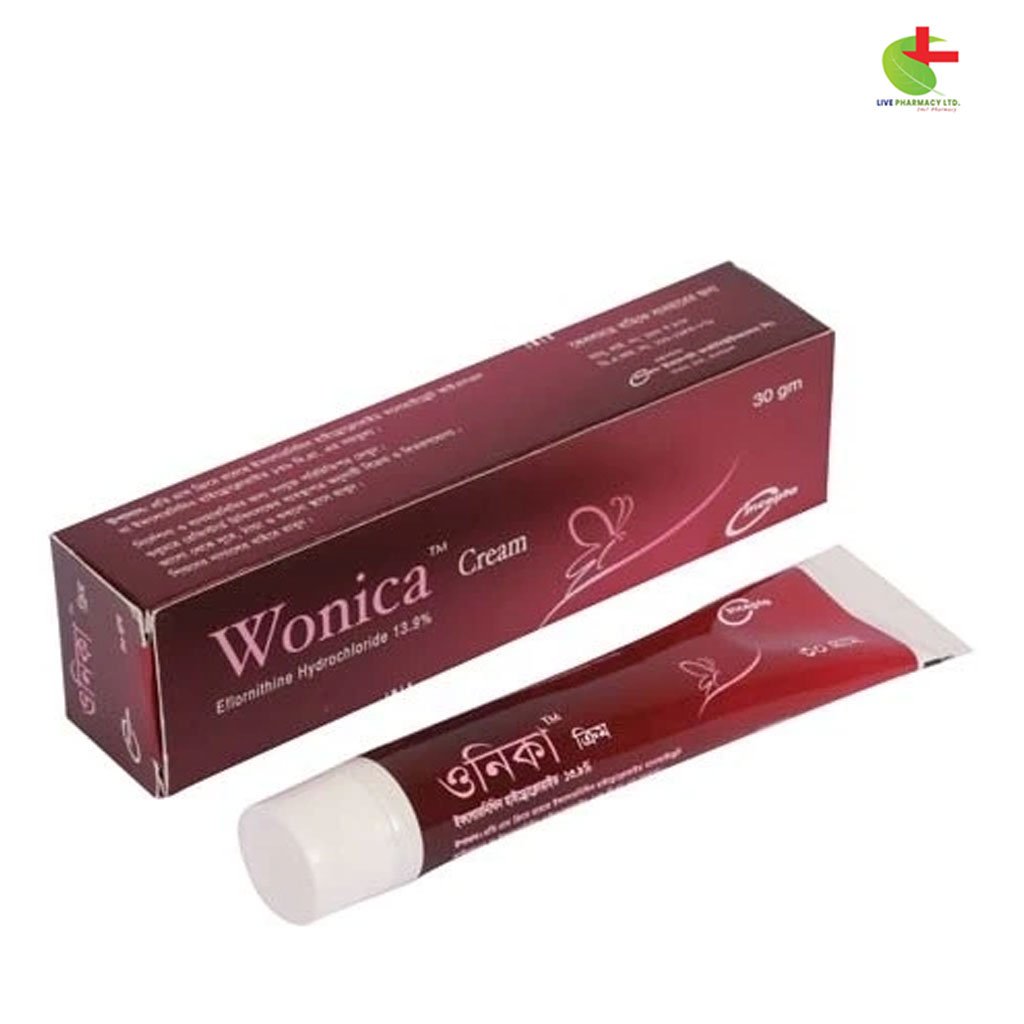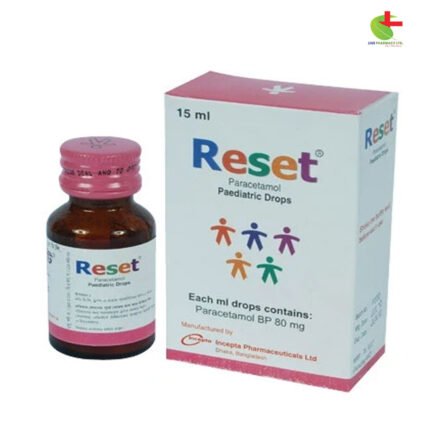Wonica Cream
1,500.00৳ Tube (30gm)
- Wonica Cream 13.9% is designed to reduce unwanted facial hair in women, targeting areas on the face and under the chin.
- It works by inhibiting hair growth through the action of Eflornithine, which prevents hair follicles from entering the growth phase.
- For optimal results, apply the cream twice daily, maintaining a strict regimen.
- The product is safe for adults, but caution is advised for individuals with liver or kidney impairments.
- Consult a healthcare professional for guidance before use.
 Brand
Brand
|
Incepta Pharmaceuticals Ltd |
|---|---|
 Generics
Generics
|
Eflornithine Hydrochloride |
 Type
Type
|
Cream |
Indications
Wonica Cream 13.9% is specifically formulated to reduce unwanted facial hair in women. Clinical studies have primarily focused on its effectiveness in treating hair growth on the face and the areas just below the chin. Application should be restricted to these targeted areas.
Please use this medication under the guidance of a registered healthcare professional.
Pharmacology
Eflornithine works by inhibiting hair growth during the anagen phase of hair production. This inhibition occurs as Eflornithine irreversibly binds to ornithine decarboxylase (ODC), preventing the natural substrate, ornithine, from reaching its active site, a process known as suicide inhibition.
Dosage & Administration
Apply Eflornithine cream to the affected areas twice daily, ensuring an eight-hour interval between applications. Efficacy has been demonstrated exclusively for the facial area and under the chin. Do not exceed a total of 30 grams per month, as determined safe in clinical trials. Improvement can typically be observed within eight weeks of initiating treatment, and ongoing application may lead to further enhancement of results. It’s crucial to continue treatment to maintain its beneficial effects; however, if the condition reverts to pre-treatment levels within eight weeks after stopping the medication, reconsideration of the treatment plan is advised. If no improvement is noted after four months of therapy, discontinue use and consult a healthcare provider. Patients may need to continue traditional hair removal methods, such as shaving or plucking. If so, apply the cream at least five minutes after these methods to minimize potential stinging or burning sensations.
Special Population Considerations
- Elderly: No dosage adjustment is required for individuals over 65 years old.
- Pediatric: The safety and efficacy of Eflornithine in children aged 0 to 18 years remain unestablished, and there is insufficient data to support its use in this demographic.
- Hepatic/Renal Impairment: The safety and efficacy of Eflornithine have not been evaluated in women with liver or kidney impairments. Exercise caution when prescribing Eflornithine cream to patients with severe renal impairment.
A thin layer of the cream should be applied to clean, dry affected areas, ensuring complete absorption without visible residue. Hands should be washed thoroughly after application. For optimal results, do not cleanse the treated area for at least four hours post-application. Cosmetics, including sunscreens, can be applied after five minutes.
Please use this medication under the guidance of a registered healthcare professional.
Interactions
No interaction studies have been conducted for Eflornithine.
Contraindications
Do not use if hypersensitive to Eflornithine or any excipients. Excessive hair growth may indicate serious underlying conditions (e.g., polycystic ovary syndrome or androgen-secreting tumors) or certain medications (e.g., cyclosporine, glucocorticoids, minoxidil). These factors should be considered in the comprehensive medical treatment plan for patients prescribed Eflornithine. This cream is for external use only; avoid contact with eyes and mucous membranes, and be aware that transient stinging or burning may occur if applied to broken skin.
Side Effects
Adverse events are generally mild and tend to resolve without the need for medical intervention. Possible side effects may include acne, pseudofolliculitis, skin stinging, headache, burning sensation, dry skin, erythema, itching, tingling, dyspepsia, skin irritation, rashes, hair loss, dizziness, folliculitis, ingrown hairs, facial swelling, nausea, fatigue, vertigo, and loss of appetite.
Pregnancy & Lactation
- Pregnancy: Limited clinical trial data from 22 pregnancies suggests no adverse effects on mothers or infants due to Eflornithine use. Among these, 19 pregnancies occurred during treatment, resulting in 9 healthy infants, 5 elective abortions, 4 spontaneous abortions, and one case of Down’s Syndrome in a 35-year-old mother. Animal studies indicate reproductive toxicity, and the risk to humans remains unclear. Therefore, alternative methods for managing facial hair are recommended for pregnant women or those planning pregnancy.
- Lactation: It is unknown whether Eflornithine or its metabolites are excreted in breast milk. Women who are breastfeeding should avoid using Eflornithine.
Precautions & Warnings
If skin irritation occurs, reduce the application frequency to once daily. Should irritation persist, discontinue use and consult a healthcare professional.
Overdose Effects
Due to the minimal cutaneous absorption of Wonica, an overdose is unlikely. However, in cases of excessive topical application or accidental oral ingestion, monitor for symptoms similar to those observed with therapeutic intravenous Eflornithine doses (400 mg/kg/day or approximately 24 g/day), used for treating Trypanosoma brucei gambiense infection (African sleeping sickness). Symptoms may include hair loss, facial swelling, seizures, hearing impairment, gastrointestinal issues, appetite loss, headache, weakness, dizziness, anemia, thrombocytopenia, and leukopenia. If overdose symptoms occur, cease using the product immediately.
Therapeutic Class
Hair Growth Inhibitor
Storage Conditions
Store below 30°C, away from light and moisture. Keep out of reach of children.













Reviews
There are no reviews yet.